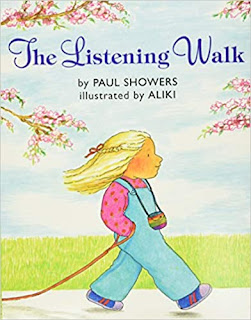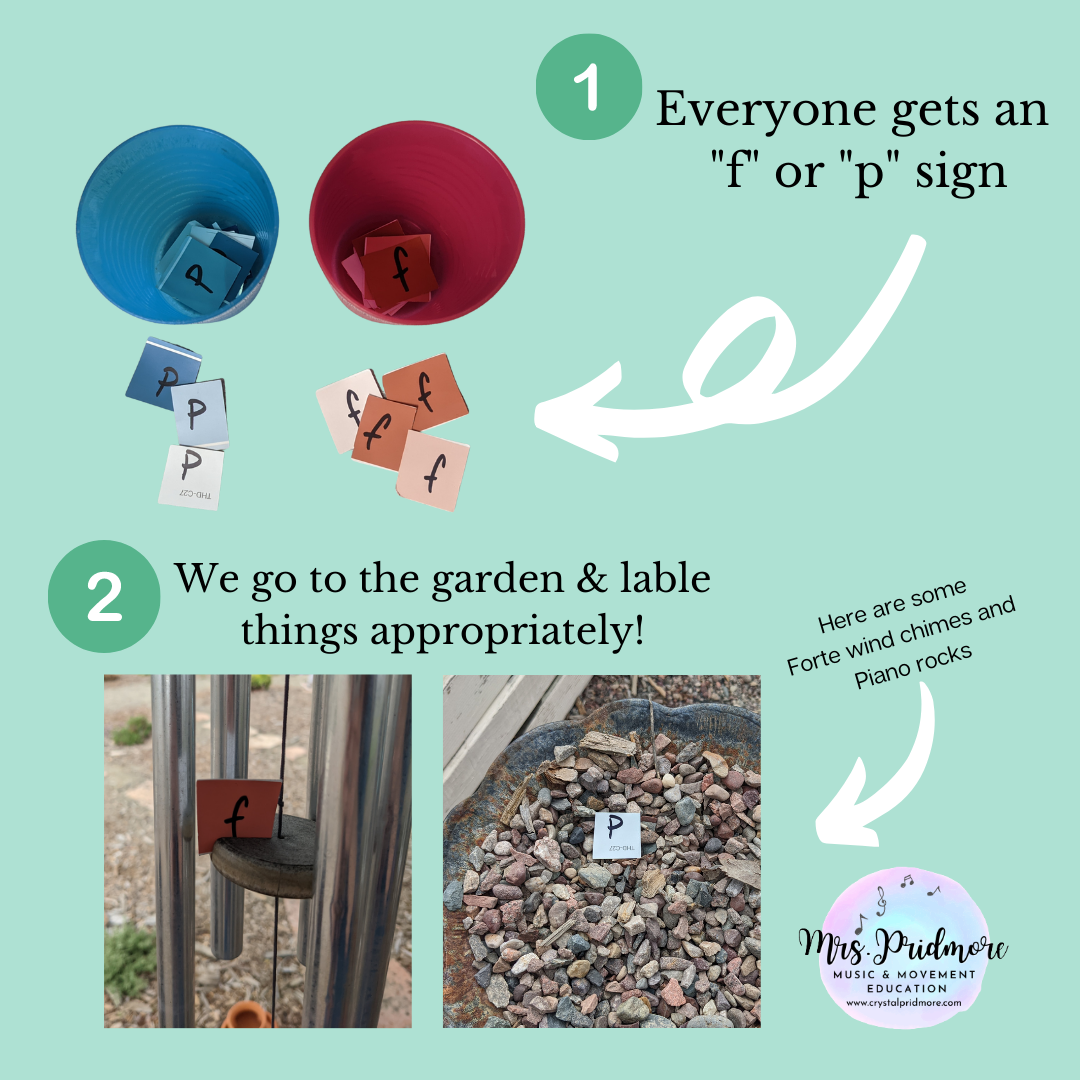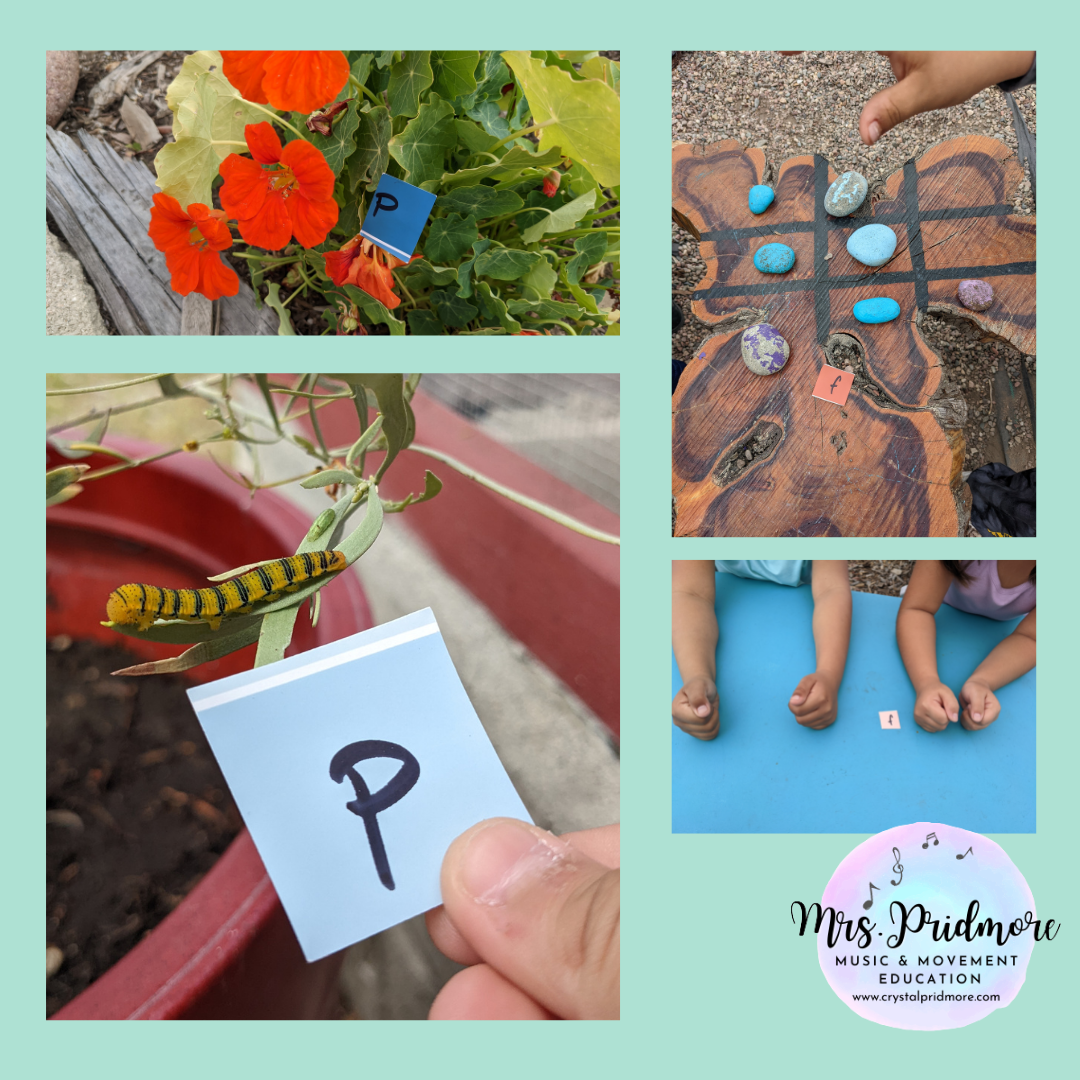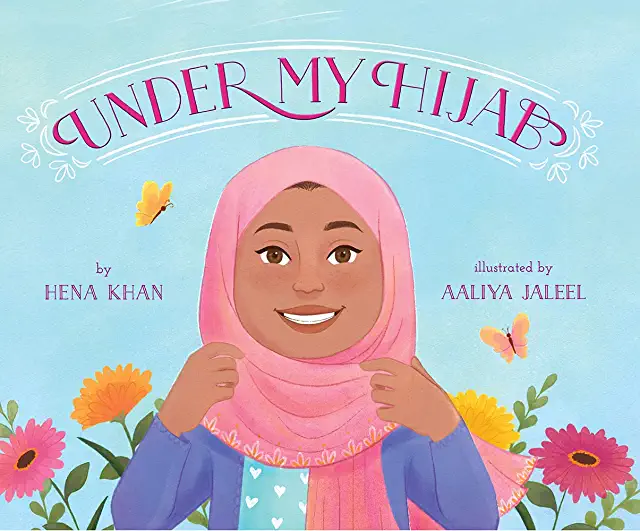Sounds. Noises. Music. Squeals, splashes, tweets, whistles, zonks, and barks.
This is a fun video to get children thinking about sounds.
Clangery bash, splish a ma splash.
Whomp, rumble, wah wah squeak.
So many sounds to make, to hear.
Listen, listen, use your ears.
I love starting with this book and every couple of pages insert the speech above.
Then we review the ways we use our voices and bodies while we play Boom Chicka Boom. We speak this with various voices; cow sounds, baby style, low and high voices, whisper voices, etc. We also explore new ways to keep the body percussion ostinato.
Next we read The Listening Walk by Paul Showers and Aliki.
Once we have read the book, we go on a silent listening walk outside. You could also choose to take your walk through your building. Students work in pairs with one pencil, a clipboard, and one recording sheet below.
Students then discuss their favorite 5-7 sounds and how to recreate them with voices or bodies.
Next we talk about how to show the sounds visually. I love this post from Classicfm on how art and music collide in graphic notation. Here is one of the graphic scores shown, isn't it gorgeous and a great example of linear non-traditional notation?!
Students will choose an order for their sounds - what comes first, second, etc.? Are they all quiet sounds or is there a mix of quiet and loud? Is there a mix of high and low sounds?
On a blank piece of paper in landscape orientation, students draw a “road” and write their favorite 5-7 sound names or representation. Add dynamics of p or f for quiet or loud for each sound. Perform.
Then we discuss how composers interpret sounds with instruments. Here is a student sample:
Next students circle up to three sounds to try to interpret on instruments. The other instrument sounds continue to be performed with voices or bodies. Students choose the kinds of instrument timbres that best represent the sound. This part can get NOISY, but allow for the noise and for the exploration as students make choices and decisions. There is no right or wrong answer.
Now we are ready for the song to create a Grand Rondo!
Perform in rondo form with song as A Section, student creations will be contrasting sections.
Then we listen to excerpts from Beethoven's Pastoral Symphony (No. 6). Beethoven deeply loved nature and often traveled to the countryside outside of the busy city.
As Beethoven's favorite place was being in nature, while listening students draw pictures of their favorite places and add a few sentences about this favorite place.































